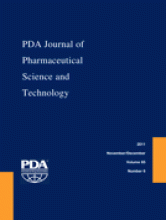Abstract
CONFERENCE PROCEEDING Proceedings of the PDA/FDA Adventitious Viruses in Biologics: Detection and Mitigation Strategies Workshop in Bethesda, MD, USA; December 1–3, 2010
Guest Editors: Arifa Khan (Bethesda, MD), Patricia Hughes (Bethesda, MD) and Michael Wiebe (San Francisco, CA)
The production of biotechnology products using mammalian cell lines offers an inherent risk of viral contamination because of the scale of the process and the complexity of the materials employed. The testing of production cell lines, raw materials, and test execution at appropriate stages of production all combined with viral inactivation or removal strategies ensures that an infectious agent is absent from the purified final product. Perhaps because of these efforts, biotechnology products have not been linked to a negative clinical consequence. However, manufacturing viral contaminations still do occur and may have a great potential negative impact to our patients by disrupting the drug product supply chain. In this paper, additional end-to-end complementary viral safety program considerations are suggested beyond the traditional viral testing and inactivation/removal strategies. These additional points of consideration should be thought of as augmenting the above approaches to further provide a reasonable measure of mitigating the risk of viral contaminations within the biopharmaceutical manufacturing facility.
The scope of this paper is on biologics produced in mammalian cells with an emphasis on viral contaminations involving Chinese hamster ovary cell production, although for the examples given as lessons learned with previous industry contaminations, vaccine production issues have been included as a general reference.
- © PDA, Inc. 2011
PDA members receive access to all articles published in the current year and previous volume year. Institutional subscribers received access to all content. Log in below to receive access to this article if you are either of these.
If you are neither or you are a PDA member trying to access an article outside of your membership license, then you must purchase access to this article (below). If you do not have a username or password for JPST, you will be required to create an account prior to purchasing.
Full issue PDFs are for PDA members only.
Note to pda.org users
The PDA and PDA bookstore websites (www.pda.org and www.pda.org/bookstore) are separate websites from the PDA JPST website. When you first join PDA, your initial UserID and Password are sent to HighWirePress to create your PDA JPST account. Subsequent UserrID and Password changes required at the PDA websites will not pass on to PDA JPST and vice versa. If you forget your PDA JPST UserID and/or Password, you can request help to retrieve UserID and reset Password below.






